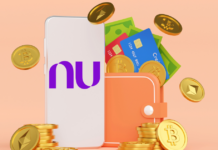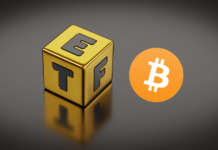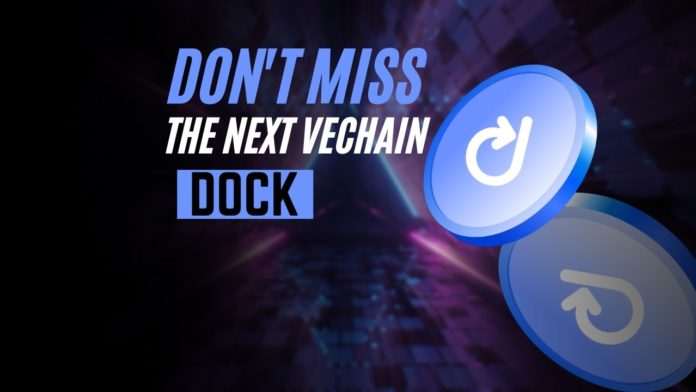Without a real-world problem, a solution and the utility of cryptocurrency make no sense. But DOCK is among the very few blockchain projects that have a solid solution for a glaring real-world problem.
Portability, security, and forging of our identity documents. These documents could be passports, educational credentials, driving licenses, and more. Therefore, Dock is on a mission to make this kind of identity data-efficient and secure.
However, can Dock provide a self-sovereign identity solution? Is it capable of competing against VeChain? And does Dock token have a strong utility in its ecosystem? Let’s find out the answers.
What is Dock?
Dock is a decentralized network for issuing credentials. But what does that mean for someone like you and me? Well in our daily life we come across questions like these situations:
- Is the doctor who will treat me at this hospital board certified?
- Or is there an easier way to provide your necessary personal information for KYC for a bank or financial app?
That is where DOCK comes into the picture. However, let me tell you the use case of DOCK goes much beyond healthcare or education. It finds its use in Retail, finance, legal, and many more sectors that rely heavily on credential data.
Also, Dock calls themselves verified credentials as a service as they can be used by both individuals and companies.
They have both a credentialing system and a decentralized digital ID they call a DID. They are a Web 3 project and in fact, their credentialing system using blockchain meets all W3C standards. Moreover, they even received a grant from the Web3 Foundation to push forward our vision for a decentralized ecosystem producing blockchain-anchored verifiable claims.
To keep the DOCK explanation simple, I will use the example of the credentials of a doctor. However, before that, you need to know that Dock is a PoS network that works in what seems like 2 layers. Its mainnet went live Sep 30, 2020. The Proof of stake mainnet went live on July 7th, 2021.
More About Dock
Coming back to the two layers, these are combined as one but this helps explain what’s going on more clearly. One is the blockchain layer. On this layer, a doctor can upload personal information like:
- His resume
- Degrees
- Credentials that say he’s board-certified to perform surgery and do so at Hospital X.
Or the hospital can upload the info for him. But there’s a second layer just for Hospital X. Hospital X can grant, deny, or revoke a doctor’s credentials. Now, why would Hospital X want to do that?
Well, situations change. If our surgeon gets a DUI and loses his board certification, then he would lose his privileges at the hospital too, right? And thus this credentialing layer would change from approved to revoked.
Now the immutable blockchain layer stays the same. The information on the doctor’s resume, degrees and the fact he is (or was) working at Hospital X all stay the same. That information is already preserved in a block. And future employers for our surgeon will get to see all that information including that he had privileges and they were revoked.
In reality, it’s not two layers. The issuer (the hospital) owns the wallet. They sign the transaction as either an approval or revocation of credentials when someone asks about our surgeon’s credentials.
This point is important and potentially confusing. Just because Hospital X can revoke privileges does NOT mean they can go into the blockchain and change the information already in a block. The immutability and censorship-resistant benefits of blockchain are in effect with Dock. Those benefits are enhanced as something like work status via credentialing can be changed but the base information in the existing block cannot.
Dock is using blockchain for all the right reasons. And this issue shows why credentialing on the blockchain can be difficult and needs to be perfect. But we were still unsure how the credentialing layer works in detail? We want to make a bulletproof case for you that your credentials are safe.
DOCK Offering Credentials As a Service
Well, according to the DOCK team the Holder’s credentials are stored on the holder’s device and they can choose to share the credential with whomever they choose. Should a verifier request their credentials, the Holder creates a presentation of their credentials and sends it to the Verifier. This presentation contains the claims made where the Issuer and the Holder signs it so it is known to be legitimate.
The only info that is put on-chain is the issuers DID (Decentralized Identifier) and the Holders DID, and optionally a hash of the credential can be ‘anchored’ on-chain where there is a requirement for the credential to have a time stamp. So the credentials are NOT put on chain ensuring Z+ security.
2/3
Dock's mission is to enable organizations and individuals to create and share verifiable data. #VerifiableCredentials contain cryptographically signed pieces of information that can be instantly verified and authenticated.— Dock (@docknetwork) March 10, 2022
Organizations that want to issue verifiable credential VCs without writing a line of code can utilize Dock Certs. Using Dock Certs, these organizations do not have to alter their current work processes. Dock Certs is an alpha release and it is flexible to suit any company’s needs.
Then, users can sign up for Dock Certs in only a few clicks and start creating their decentralized IDs (DIDs) and verifiable credentials. Following the creation of the credential, companies can send the holder a link in an email or a PDF/digital certificate. However, companies can send the credential as a JSON file that the holder can save in their credential wallet. With a cryptographic method, users can confirm verifiable credentials. Furthermore, this method eliminates the possibility of falsification. As a result, companies can verify credentials without the fear of forgery.
Companies Can Have Their VC in Their App
Dock extended its services to organizations that intend to share variable credentials in a mobile application. The platform offers its mobile SDK. Dock’s SDK is an excellent starting point for incorporating verified credentials and decentralized identity. It saves the time and expense of constructing an API from scratch. Furthermore, Dock’s SDK allows these organizations to:
- Incorporate Dock’s features into their apps.
- Exercise complete control over the development, issuance, and authentication of verifiable credentials.
- Utilize Dock’s network to build their mobile applications.
Dock provides both ready-made and customizable VC and DID opportunities for companies and developers. Users can opt for whichever seems most convenient.
DOCK Token Utility & Tokenomics
DOCK with its mainnet launch and use cases seems to be a solid blockchain project that solves real-world problems, let’s evaluate the utility of its DOCK token.
Moreover, what powers the information on the blockchain and for issuers to sign credentials is its own $DOCK token. You can’t have a DID (decentralized ID) on Dock without it. All transactions require the token. Its use cases are for governance and for staking.
The $DOCK token is very important. Dock has USD-paying customers that pay for API calls to credentialing layers. But you can only make changes to the credentialing layer like revoking someone’s hospital privileges using the $DOCK token to pay for the network’s use.
On the other hand, $DOCK currently trades at $0.0368 with a total supply of 1 billion tokens. Out of which 70% is with holders, 15% is with Treasury and Dock Assn, 15% is for emission rewards. According to the team, the circulating supply is 756 million and the emission of the remaining DOCK will happen over 25 yrs drops 25-30% per year.
If we take a look at the Dock Explorer we see close to 13.5% DOCK is currently staked. In fact, in January 2022, Binance launched DOCK staking with an APY of 37%. In addition, in a rare feature in crypto, $DOCK is available through a direct buy from the company. You can also buy through Binance, Gate.io, Huobi, Kucoin, AAX, Hotbit, WazirX, and CoinDCX.
Stake Dock on Binance with up to 37.27 APY! Find out more here https://t.co/kl3iY725Nr https://t.co/7aRCBvuFEx
— Dock (@docknetwork) January 19, 2022
DOCK Price Prediction
- Bullish Scenario: If DOCK manages to break above the resistance level at $0.041 then it would be bullish. If it gains some momentum and buying pressure builds up then we might test the next resistance level at $0.049 and $0.058. Breaking above the $0.058 price level with significant buying volume will lead to a good chance of crossing above $0.074.
- Bearish Scenario: DOCK has been in a downtrend channel for the last few weeks. Also, if the $0.032 support level is not stable, the price will fall to $0.022, $0.014, and even lower sooner or later.
DOCK Competitors
Dock is competing against some of the very strong VC and DID projects like VeChain, Ontology, and Kilt.
The biggest advantage of Dock over the competitors is that they don’t have an SDK, but a simple API and hold the keys for you, so it’s very easy for developers to work with API and build customized apps for mass adoption.
In fact, in Q2 of 2022 DOCK plans to release an Ethereum bridge and that would further enhance the adoption.
Conclusion
It’s an undeniable fact that web3 is just around the corner. You must have understood by now that decentralized Identities (DIDs) are the Web 3 Pass. Therefore, you will need a web3 identity to surf, transact, or share your data on a decentralized internet. This web3 ID will carry your credentials, your reputation, and the linked data on a wallet.
As a result, this opens a huge use case in DeFi and NFT marketplaces, as well as users, will be able to prove/verify their transactions and ownership of assets without revealing their wallet address or the entire history of transactions.
So DOCK has an inevitable use case in and beyond the blockchain industry.
Join us on Telegram to receive free trading signals.
Find the most undervalued gems, up-to-date research and NFT buys with Altcoin Buzz Access. Join now starting from $99 per month
Disclaimer
The information discussed by Altcoin Buzz is not financial advice. This is for educational, entertainment, and informational purposes only. Any information or strategies are thoughts and opinions relevant to the accepted levels of risk tolerance of the writer/reviewers and their risk tolerance may be different than yours. We are not responsible for any losses that you may incur as a result of any investments directly or indirectly related to the information provided. Bitcoin and other cryptocurrencies are high-risk investments so please do your due diligence. This article has been sponsored by Dock.io. Copyright Altcoin Buzz Pte Ltd.



























